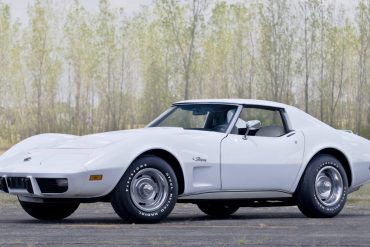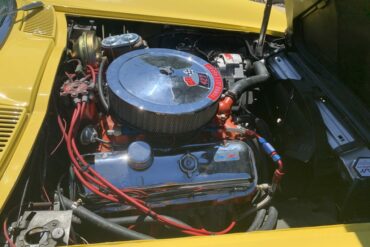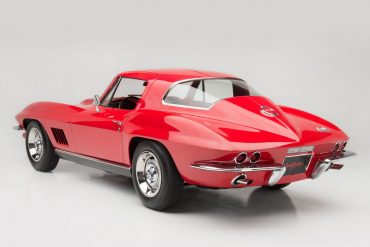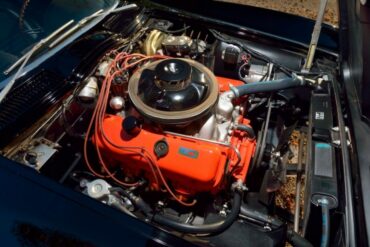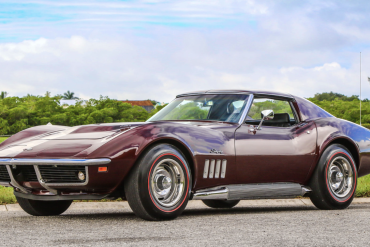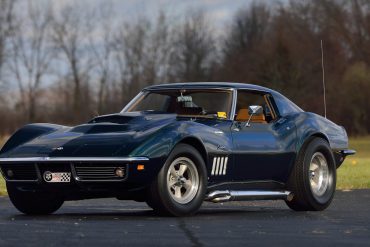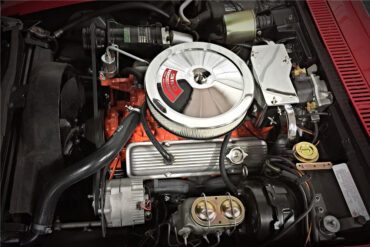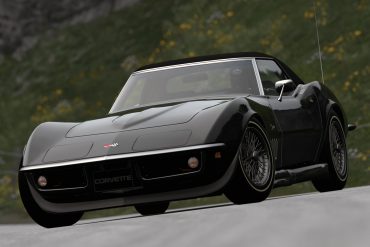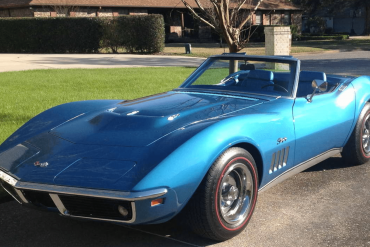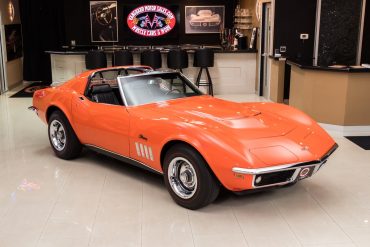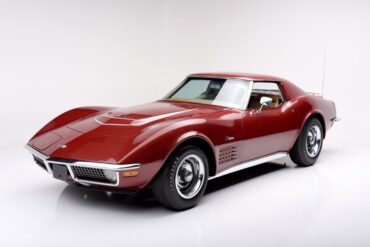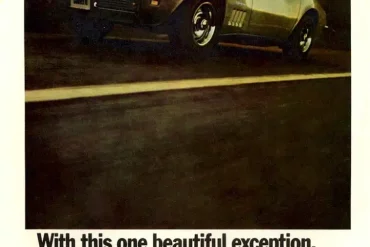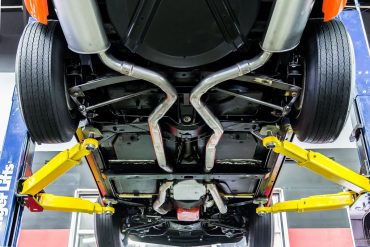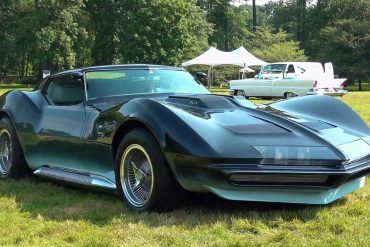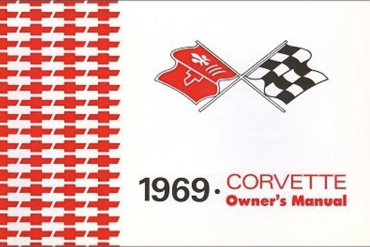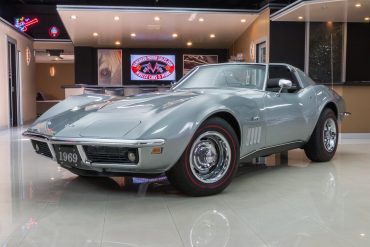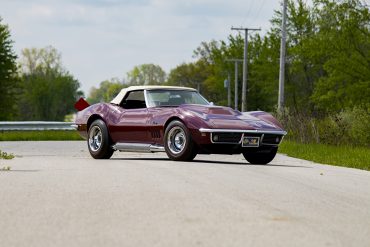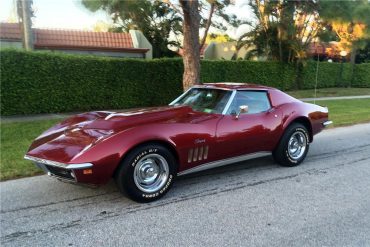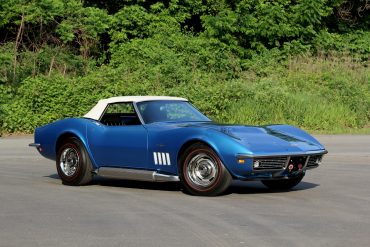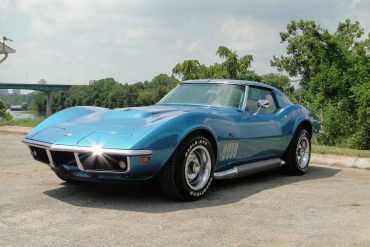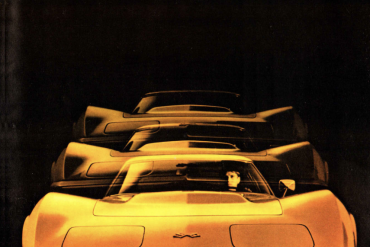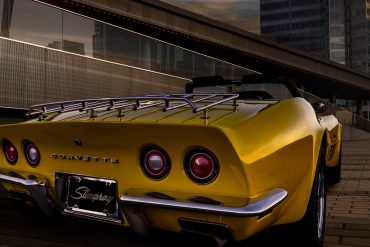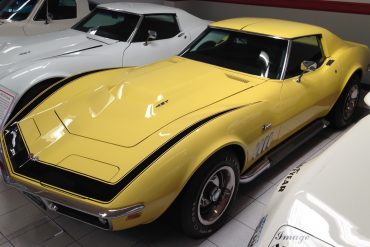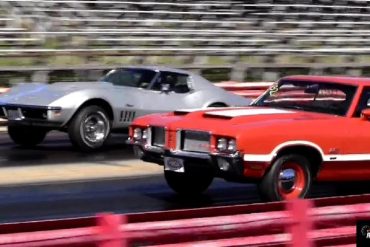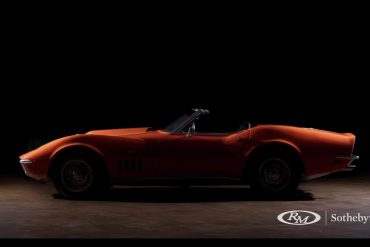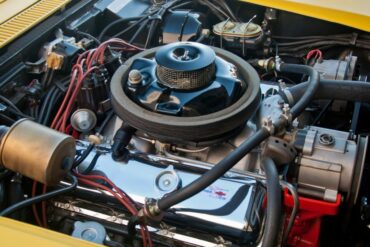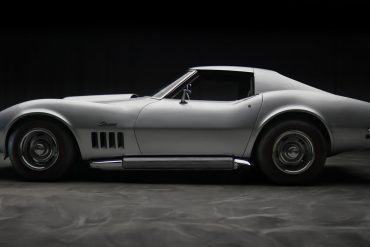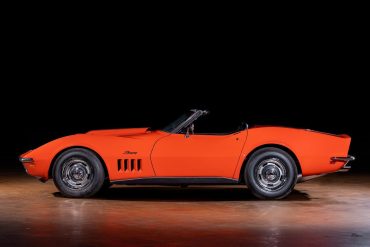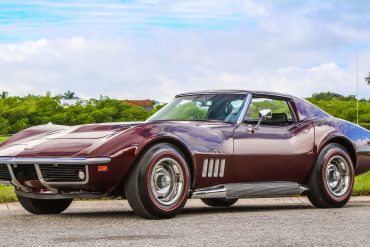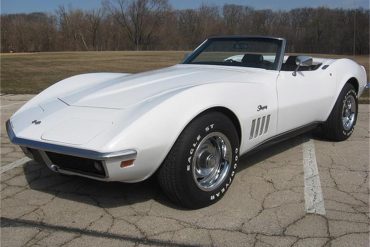The C3 Corvette rolled off of the assembly line and into the hearts of sports car and performance enthusiasts alike,...
Upon its 1953 release, America’s sports car mustered only 150 HP, yet in 1966, the newly evolved Corvette nearly tripled this level of output. It was in 1966 that the Corvette was offered with not one, but two different variants of the robust 427 cubic-inch (7.0L) V8. In its most potent form (L72), the 427 officially produced 425 HP. However, most believe this value to be grossly understated.
The L88 was a special option package developed under the direction of Zora Arkus-Duntov, director of GM’s performance division. First introduced in 1967, the L88 Corvette featured a highly modified version of Chevy’s 427-cubic-inch V-8 engine. Although this engine received a factory horsepower rating of 435, actual engine output was somewhere between 540 and 580 horsepower, giving the “stock” L88 enough power to run a quarter-mile in the high-11-second range!
No list of formidable Corvette engines would be complete without including the 1967 L88. The L88 was a fire-breathing variant of GM’s 427 cubic-inch big-block lineup, which served as nothing short of a production race engine. Officially rated at 430 HP, the L88 was capable of propelling its C2 host to previously unattainable performance status. The L88 was nothing, if not a loosely veiled production race engine.
Power and blinding acceleration were the driving forces behind the development of the 1968-1969 Chevrolet Corvette 427. Only 390 1969 Corvettes were built with the famous L89 427 and while the L89 option was chosen 624 times in 1968, it is still a rare beast relative to total production. The 427 CI engine was good for 435 HP and a strong 460 lb-ft of torque making it one of the best-accelerating cars of its time.
Various upgrade packages were offered by Motion Industries, for the Chevrolet models included within the Baldwin Corvette partnership. The most prominent of these packages included the SS (425 HP) and Phase III (500+ HP) offerings. These cars not only came with a performance promise, but a guarantee to back it up. All Phase III cars came with a personal guarantee.
The 350ci V8 was actually a further extension of GM’s decade-old small-block engine series. In a bid to further cement the Corvette’s performance legacy, subsequent modifications to these earlier engines were made, thereby giving birth to one illustrious platform. It would serve as a mainstay of the Corvette line for over three decades to come.
1969 Corvette – The Ultimate Guide The 1969 Chevy Corvette arrived on the coattails of critics who had been anything...
Browse 1969 C3 Corvette pictures, photos, and images. Explore and get inspired by hundreds of interior, exterior and action photos.
Our team has scoured the web to find some great videos of the 1969 Chevrolet Corvette.
For all 1969 Corvettes, the location of the Vehicle Identification Number (VIN) is stamped on a plate attached to the left front body hinge pillar. (See Figure 1 below.)
1969 Corvette Ads We have curated a cool list of all the 1969 Corvette advertisements, commercials and posters we could...
The following list of common issues is intended for individual reference only, and may not reflect the specific issues of every 1969 Corvette.
The Manta Ray was actually the 1965 Mako Shark II (XP-830) with a few upgrades, so it featured many of the Mako II's outward features, such as side exhausts and a lower-body (along the rocker panels) silver paint job. The front end had a pointed chin spoiler and the headlights used 2 banks of 3 quartz-halogen lights.
This Owners Guide contains important information regarding the operation and maintenance of your 1969 Corvette. In order to obtain maximum enjoyment and usage from your car, we suggest that you familiarize yourself with the contents...
See the complete technical specifications and performance information for the 1969 Chevrolet Corvette, including engine specs, acceleration, & quarter mile.
We've scoured the web to curate the factory pricing, options, and interior/exterior color options for the 1969 Chevrolet Corvette.
In 1969, sales took a vertical leap, increasing by more than 10,000 units to a total of 38,762 Corvettes sold that year. It was a Corvette sales record that would not be topped again until 1976
Looking for information on how to maintain your 1969 Corvette? We've curated resources to help you keep your Corvette in great shape for years to come!
1969 C3 Corvette RPO Codes, Options Codes & Order Guide If you are looking to decode your 1969 Corvette RPO’s...
Download this 1969 Corvette Dealers Sales Brochure for a quick look at the features of the car. No need to be aware of any substitutes. There aren't any. There is no mistaking a Corvette for anything but a Corvette. The aerodynamic links of America's original sports car...
We have curated the ultimate collection of the 1969 Corvette Wallpapers and HD backgrounds for you to enjoy. Free to download
In 1969, Chevrolet changed the perception of Corvette forever by introducing the ultra-powerful ZL-1 Corvette with a 427 CI engine producing 585 horsepower! The 1969 ZL-1 Corvette came equipped with an entirely new big-block engine option that produced more horsepower than any Corvette that had come before it. Any Corvette, when ordered with RPO ZL1, came fitted with an all-aluminum 427 C.I. engine that featured a dry-sump oil system and which weight approximately 100 pounds less.
In today’s video courtesy of Road Test TV, we get to witness a vintage quarter-mile drag between two examples of...
The folks at RM Sotheby’s recently auctioned one of only two 1969 ZL-1 Corvettes ever made and it sold for...
The Vette’s performance dropped significantly during the early to mid-1970s, at the hands of newly implemented federal emissions standards, yet it remained relevant. At a point in which many iconic American performance cars fell by the wayside, the Corvette soldiered on. This served as a true testament to many of the memorable Corvette powerplants that were developed during the C3 era.
PCarMarket is currently offering a 1969 Chevrolet Corvette that was equipped with the L88 package. Chevrolet started offering the L88...
Mark your calendars as RM Sotheby’s will soon offer this extremely rare, almost legendary 1969 Chevrolet ZL-1 Corvette. On January...
Burgundy 1969 Chevrolet Corvette We found some examples of 1969 Corvette in the Burgundy color scheme. These real Burgundy paint pictures of...
Can-Am White 1969 Chevrolet Corvette We found some examples of 1969 Corvette in the Can-Am White color scheme. These real Can-Am White paint...


